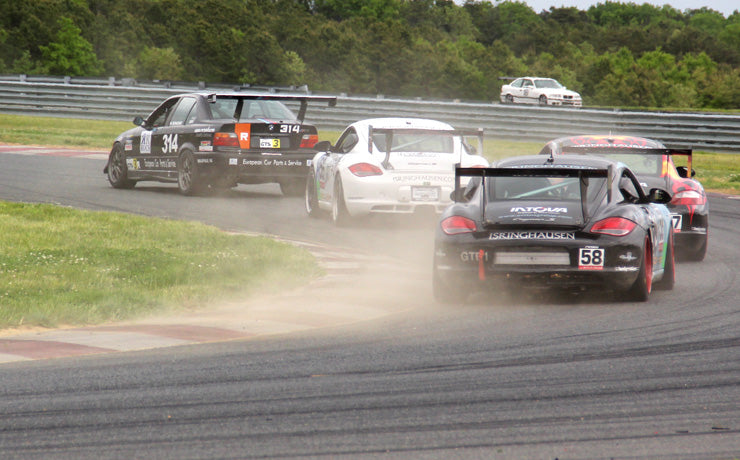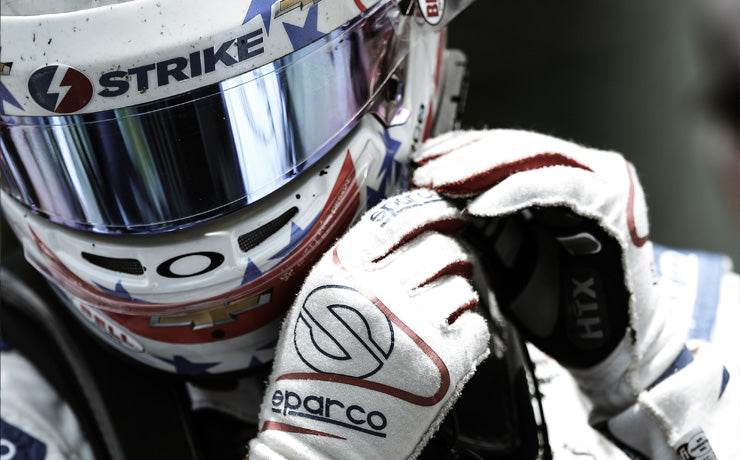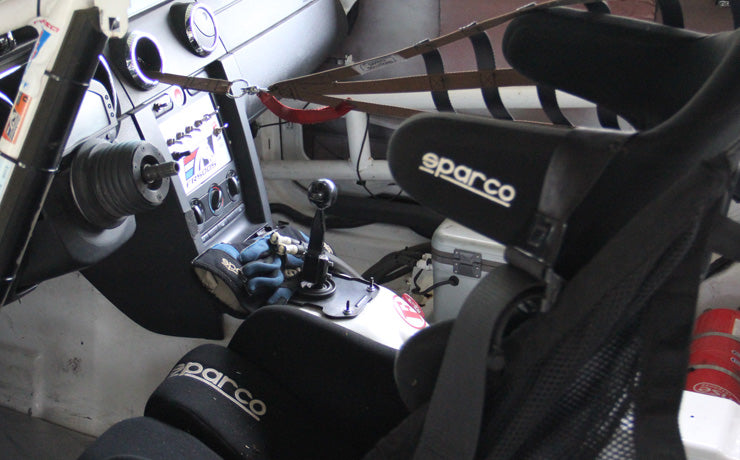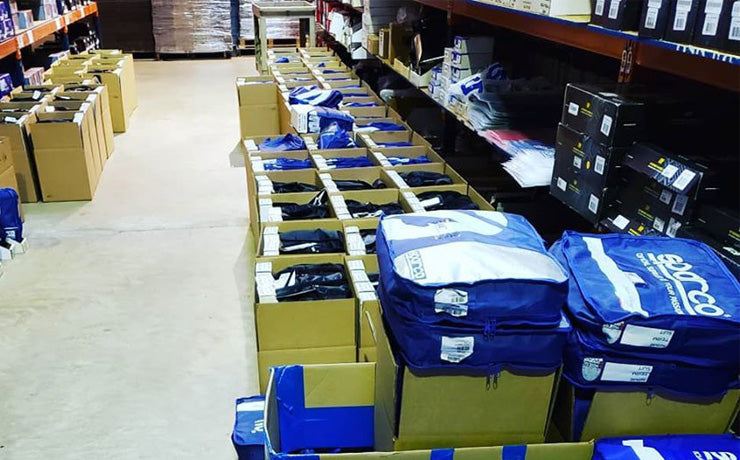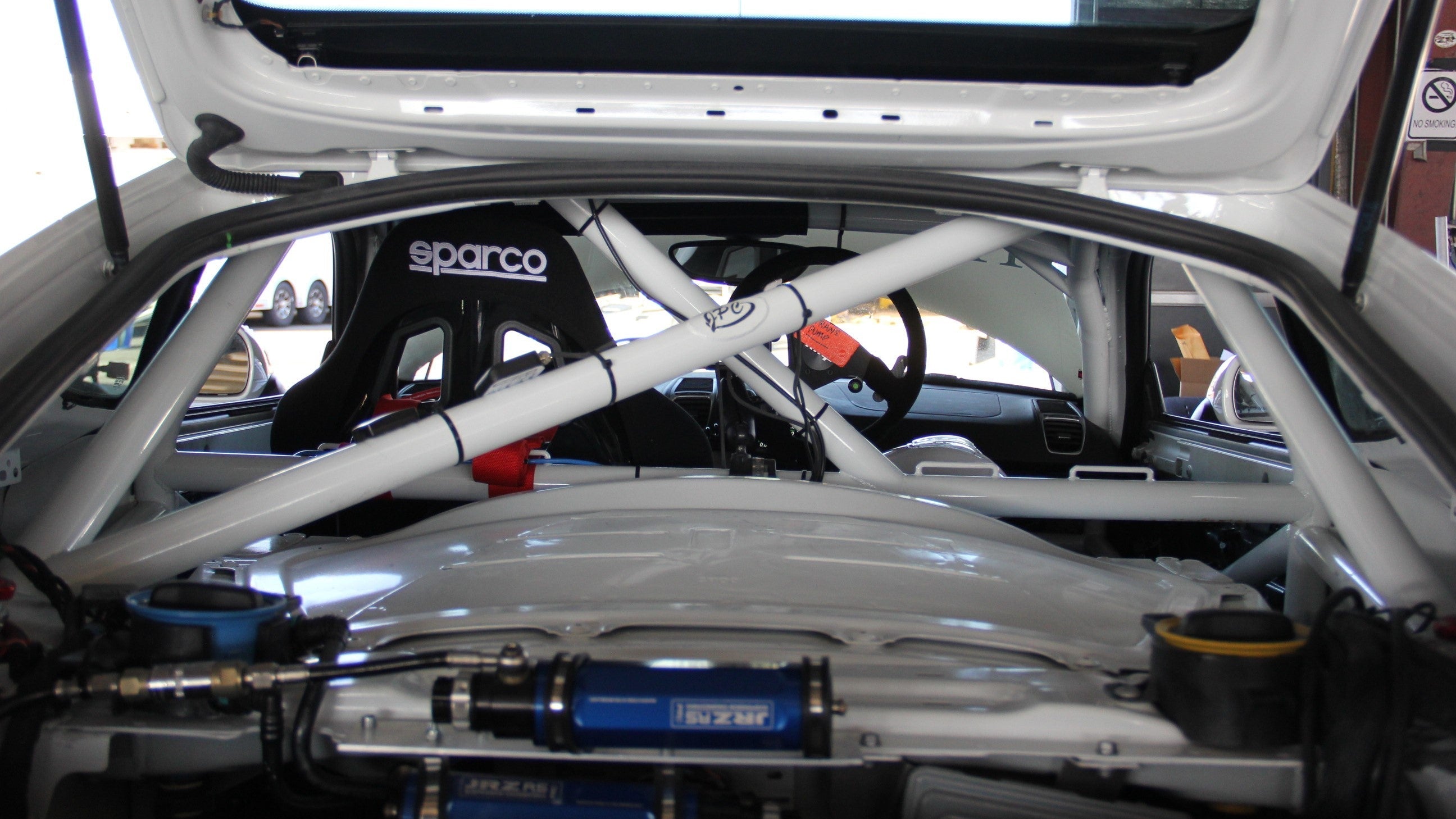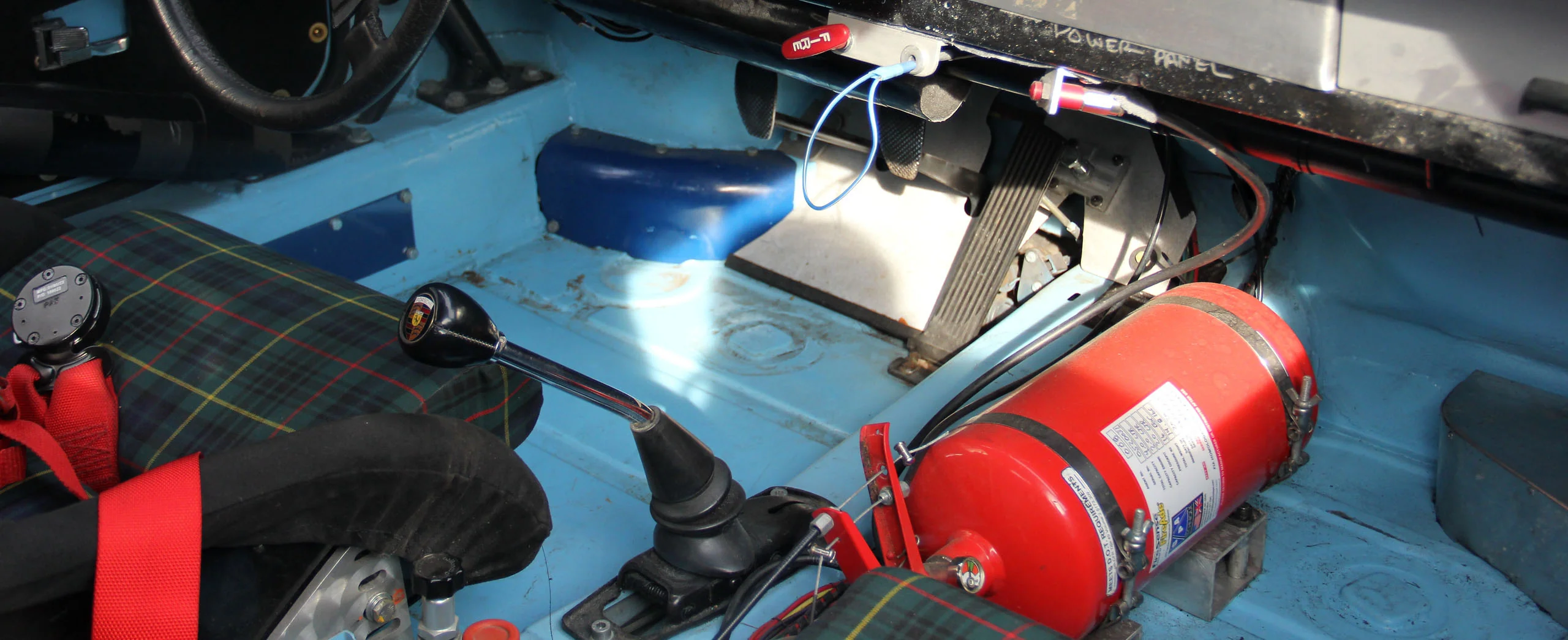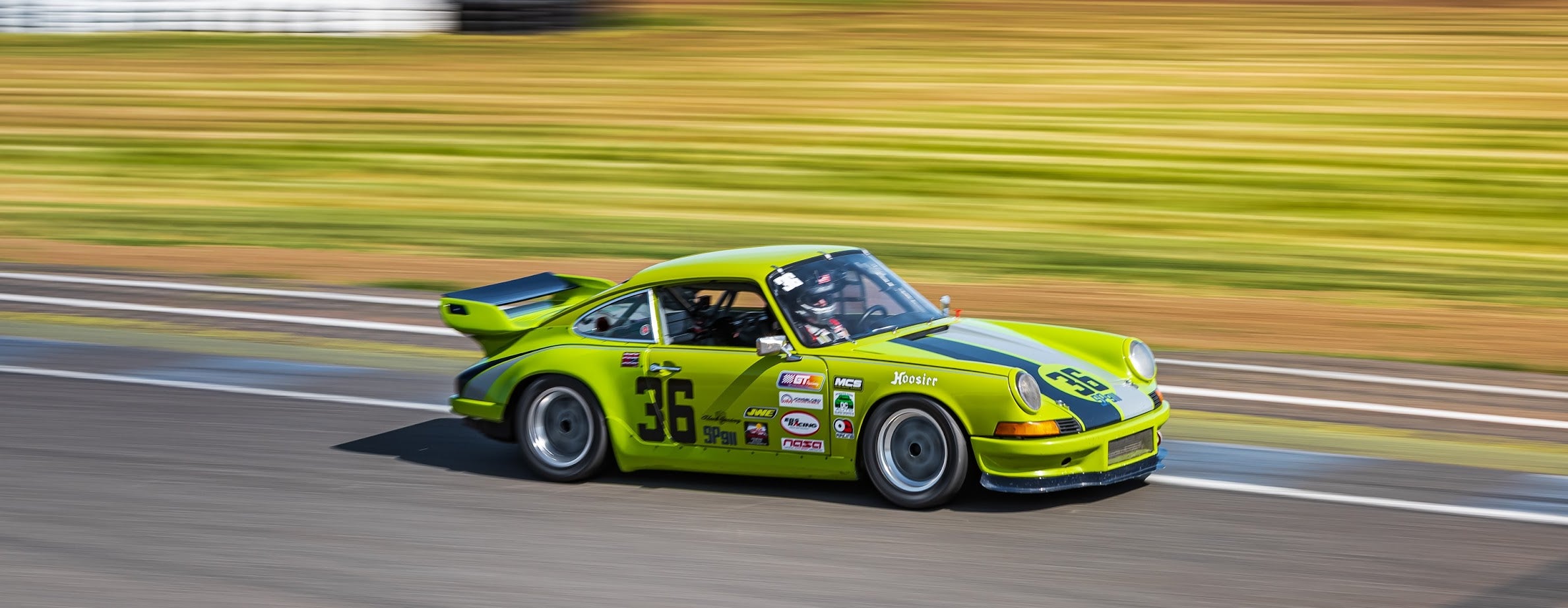
From the Porsche Expert: Brake Pad Compounds Explained
Your journey through several track events has been a thrilling learning curve, full of adrenaline and joy as you absorb the art of driving faster. As your track experience accelerates, the camaraderie among new friends and fellow enthusiasts has made each lap more exciting than the last!
Amidst the joy of making new connections and refining your skills, you've noticed significantly more wear on your street pads than during the first few track days. Seeking guidance, you've explored online forums and gathered diverse recommendations from seasoned drivers and driving instructors.
So now what?
Race brake pads excel in higher temperatures and are optimized for use alongside sticky summer tires rather than generic street tires. Of course, exceptions like Porsche GT cars, Corvettes, Mustangs, Camaros, and others come from the factory with high-performance "summer" tires. The reason is that the tires will not be able to keep up with the pads under braking, resulting in getting into the antilock braking system (ABS) or lockup on older cars not equipped with ABS. Therefore, you will want to factor in the kind of tires used on the track when selecting a race/track-oriented brake pad.

At OG Racing, we stock race/track pads from Performance Friction, Pagid, and Hawk. All three manufacturers offer a range of race pad compounds for different types of racing applications (Performance Friction and Hawk also offer a performance street compound suitable for autocross and light track use).
Below are descriptions of the popular compounds offered by all three manufacturers. Over the years, I have used almost all of these on various cars, so these are based on my experience. Check with our sales staff when you inquire since some compounds are not offered for all applications:

PF08 Compound: This endurance compound has a low wear rate and rising friction as temperatures increase. The torque curve on these is very linear and easy to modulate. This compound is rotor-friendly and popular in many Porsche and BMW applications. It works well with racing slicks, R-compound race tires, and sticky, high-performance summer tires.
PF11 Compound: A sprint and medium distance compound with a smooth torque curve that rises as the temperature increases. These are popular pads similar to the PF08 compound but offer more initial bite when applying the brakes. This compound is more suited to racing slick or an R-Compound tire but can work with high-performance summer tires when used by a driver with some track experience.

PF331 Compound: Designed for front brake applications with good initial bite, low wear rate, and very rotor-friendly. These brake pads were produced to be run with the 332 Compound (see below) used on the rear. (The 331 is currently only offered in limited fitments)
PF332 Compound: Designed for rear brake applications and works well with ABS. This brake pad has a low wear rate and is very rotor-friendly. (The 332 is currently only offered in limited fitments)
PF15 Compound: Designed for endurance racing, long stints, and high temperatures. It works well with ABS and is rotor-friendly.

Pagid offers several lines of compounds for both endurance and sprint racing. For this blog post, we will focus on the popular compounds.

RSL-29: This medium friction compound has been popular for years in endurance and sprint racing applications. The RS-29 Compound brake pads by Pagid are very respected in the Porsche community and are gaining popularity in the BMW and Mazda worlds. This compound is hugely rotor-friendly and has a slow wear rate. These pads are suitable for use with racing slicks, R-Compound, and high-performance summer tires, even those with a 200 treadwear rating, making them a solid pad choice.
RSL-1: This compound has a higher friction rate than the RSL29 and excellent stability throughout the temperature range. They are easy on rotors and offer a long pad life, assuring you get the most out of your racecar consumables. The RSL-1 compound from Pagid is suitable for racing slicks, r-compound tires, and high-performance summer tires.
RST-3: This medium to high-friction pad is more suitable for use with racing slicks and R-Compound tires. It has very nice modulation characteristics but is more suitable for drivers with higher experience levels.

RS-14: A medium/high friction pad more suitable for use with racing slick and R-Compound tires. This compound requires a deft touch to avoid lock up or getting to the ABS with a higher wear rate than other compounds. Experienced racers love these for their higher torque, as these pads can be tricky to modulate for a less proficient driver.
Brake Pad Compounds for cars equipped with Ceramic Rotors
RSC-1: This medium friction pad is explicitly designed for use on ceramic composite rotors. It is rotor-friendly and has a nice linear torque curve and release. If you have ceramic rotors, this is the pad. Race compounds designed for iron discs should not be used on ceramic composite discs, no exceptions.
RSC-3: High friction version of the RSC1. It is also easy on ceramic composite rotors.

DTC-70: This is a very high-torque pad ideally used with racing slicks and R-Compound tires. It is popular with Corvettes, Mustangs, and other heavier, high-horsepower cars. It produces low wear and has a nice feel and modulation characteristics.
DTC-60: This medium to higher torque pad works well in a wide variety of applications. It is very popular with Miata racers when used on the front with the DTC30 (see below) on the rear. It is also great for sprint racing.

DTC-30: This milder friction pad is popular with Miata racers and is used on the rear and with the DTC60 up front. It can also be used on the front and will work well on a lighter-weight, lower-horsepower car.
ER-1: This is an excellent pad for HPDE and endurance racing. Its very linear torque curve makes it easy to modulate under braking. It will work well with a variety of tires, from racing slicks to high-performance summer tires. It is really suited for light to medium-weight cars.
In summary, you need to consider several factors when selecting a brake pad for track use. Brake pads are part of a system, and only one piece of the puzzle when you want to get your car slowed down to make the first corner. When you are ready to move to race pads, factor in what tire you will be using, along with a proper racing brake fluid (Castrol SRF, Performance Friction RH665). I recommend going to steel braided brake lines while you are at it so your braking system is working in harmony when you leave the pits. Again, if you have any questions, call us at 800-934-9112 and speak to one of our sales team members, and we will steer you in the right direction. And as always, when you go to the track, be safe, have fun, and learn something. See you at the track!

For all you real OGs, the above black-and-white ad is an absolute blast from the past! Update: Mark still has an unhealthy Porsche obsession. We playfully call him the ‘Walking Porsche Encyclopedia’ as his Porsche knowledge is off the charts. As a proud member of the Potomac Region of the Porsche Car Club of America member for 30 years, he’s got stories to tell and is a true Porsche racing aficionado!

